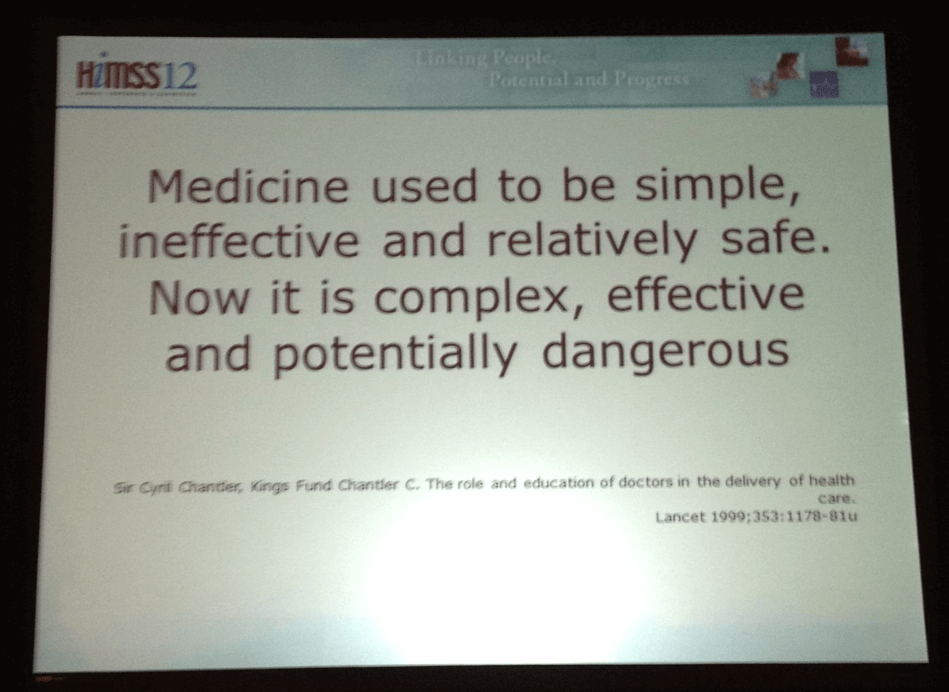After a couple of exhausting days at HIMSS last week, where I was overwhelmed both by being a first time visitor to the glitz of Las Vegas and the sheer size of the HIMSS exhibit hall, I’ve come to the conclusion that HealthIT is currently running on two separate parallel tracks.
The first track is the effort to integrate data. I first became aware of the mishmash of XML and EDI based standards back in 2008 when popHealth was launched. I remember seeing a printout of a HL7 formatted message where the machine readable XML encoded data was done in green, and the older proprietary formats, wrapped in some XML tags, was done in red. Most of the document was red, very little was in green signifying that the data was interoperable between multiple EHR systems.
Fast forward to the 2012 HIMSS conference and it turns out we as an industry are still trying to solve this problem. I met a number of vendors such as PilotFish and Meddius who offered products for transferring documents between flavors of HL7 and into and out of proprietary formats. The sessions by the Veterans Administration and Department of Defence on merging their health records into a “Integrated Electronic Healthrecord” or iEHR was some of the most interesting sessions, and demonstrated both the challenges of integrating EHR’s and the the benefits of having a single holistic view of a patient, regardless of where their health records exist. GovHealthIT has a great background article on this effort.
However, I feel like, despite all the money, and the vast improvement to patient outcomes that will come from integrating various EHR’s, we are still just ensuring that if the patient needs a leg amputated, we know which leg is the right one! All this massive IT “plumbing” is just introducing efficiencies in shuffling data around and therefore reducing errors. The second track that I saw at HIMSS is the one where we actually try and change patient outcomes. Through technology, we ensure that the patient doesn’t even need to have a leg to be amputated because we know which treatments they will respond best to. Companies like Apixio are assuming that this IT plumbing has been solved, and the real value in changing patient outcomes is looking at all the data available about a patient, both structured and unstructured, and coming up with better treatment options. If you are looking at one type of treatment, can you compare the efficacy against the larger populate of similar folks to validate it is the right one?
This is the really exciting area to work in. Using the principles of big data, cloud computing, and data anlytics to make sense of the massive amounts of uncoded data available to clinicians so they can make better decisions. Hopefully at HIMSS 2013 we’ll see more sessions on “How we improved patient outcomes via data analytics” and fewer on “how we tried to merge disparate data together”. I think the vast increase in information has driven this major change in medicine:
As technologies such as entity extraction, natural language processing, and other text mining tools progress, we may end up seeing the tension between those who want all the data to be highly structured, and those who say “give me your unstructured data, I’ll figure out what the structure is” disappear. Images become OCR text. Raw text becomes entity extracted structured data. And patient outcomes improve.

